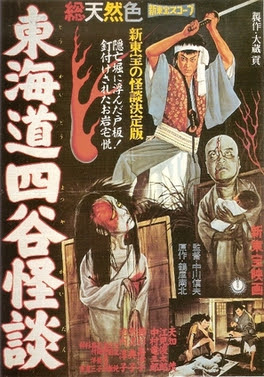The Eleventh Sunday after Trinity deals with hypocrisy and "deceitfulness of heart" and rejects pomposity and self-righteousness.
There are three cantatas for this Sunday.
Readings:
1 Corinthians 15:1–10, on the gospel of Christ and Paul's duty as an apostle
Luke 18:9–14, parable of the Pharisee and the Tax Collector
Cantata Studies:
Bach Cantatas Website | Simon Crouch | Emmanuel Music | Julian Mincham | Wikipedia | Eduard van Hengel (in Dutch) | Bach Companion (Oxford U.P.) | Bach: The Learned Musician (Wolff) | Music in the Castle of Heaven (Gardiner)
Cantatas:
- Mein Herze schwimmt im Blut, BWV 199, 12 August 1714
Recitative: "Mein Herze schwimmt im Blut"
Soprano aria: "Stumme Seufzer, stille Klagen"
recitative: "Doch Gott muss mir genädig sein"
Aria: "Tief gebückt und voller Reue"
Recitative: "Auf diese Schmerzensreu"
Chorale: "Ich, dein betrübtes Kind"
Recitative: "Ich lege mich in diese Wunden"
Aria: "Wie freudig ist mein Herz"
"My heart swims in blood"
Text & translation
Scored for a solo soprano voice, oboe, violins, viola, and basso continuo including bassoon and violone.
Solo cantata for soprano, a lament about existential pain and suffering. The text was written by Georg Christian Lehms and published in Darmstadt in 1711 in the collection Gottgefälliges Kirchen-Opffer, on the general theme of salvation. The librettist wrote a series of alternating recitatives and arias, and included the third stanza of Johann Heermann's hymn "Wo soll ich fliehen hin" as the sixth movement (of eight). The text, written in the first person, depicts the dramatic transformation of a person who feels "a monster in God's eyes" to one who finally feels accepted as God's child.
The introductory recitative ("My heart swims in blood, for the offspring of my sins make me a monster in the holy eyes of God") sets the mood, after which an intensely grieving oboe leads into a beautiful aria. The theme is still the same: "Mute sighs, silent cries, you may tell my sorrows, for my mouth is shut". Well, that is what music is for.
The next recitative introduces a note of hope, and in the aria that follows, God's forgiveness is implored. There is a rich string sound in the orchestra, perhaps indicating a note of optimism. A short recitative is followed by a chorale setting with obbligato viola in lively figuration. The third stanza of Johann Heermann's hymn "Wo soll ich fliehen hin" is integrated in this movement, to the melody of "Auf meinen lieben Gott". The final recitative introduces a different mood, with a long coloratura on "happy," after which the final aria brings the long-awaited sunshine. It is the only fast movement in the cantata, a cheerful gigue.
Videos: Netherlands Bach Society - Interview Doyle (soprano) and Bernardini (conductor). - Siehe zu, daß deine Gottesfurcht nicht Heuchelei sei, BWV 179, 8 August 1723
Chorus: Siehe zu, daß deine Gottesfurcht nicht Heuchelei sei
Recitativo (tenor): Das heutge Christentum ist leider schlecht bestellt
Aria (tenor, oboes, violin): Falscher Heuchler Ebenbild
Recitativo (bass): Wer so von innen wie von außen ist
Aria (soprano, oboes): Liebster Gott, erbarme dich
Chorale: Ich armer Mensch, ich armer Sünder
"See to it, that your fear of God be not hypocrisy"
Text & translation
Scored for soprano, tenor and bass soloists, a four-part choir, two oboes da caccia, two violins, viola, and basso continuo.
The text of this somber cantata is close to the readings for the day, emphasizing that one should not serve God with a false heart (like the Pharisee in the parable), but should pray humbly. The cantata begins with a strictly fugal chorus, almost motet-like, in which the chromatically descending melody symbolizes the "false heart.
In the first recitative and agitated tenor aria, hypocrites are castigated in a severe Lutheran manner. After further warnings ("Though you are not a thief or an adulterer, do not imagine that you are angelically pure"), the bass recitative gives the positive example of the publican from the parable.
The next soprano aria, accompanied by two imploring oboes da caccia, is a deeply felt prayer for mercy. There is grandeur in "My sins afflict me" and contrition through an inexorable downward movement in "I drown in deep mire". This is the most direct piece of music in the cantata.
Then comes the conclusion in the form of a powerful chorale. Bach would reuse the opening chorus and arias in some of his masses.
Videos: Gardiner - Herr Jesu Christ, du höchstes Gut, BWV 113, 20 August 1724
Chorale: Herr Jesu Christ, du höchstes Gut
Chorale (alto): Erbarm dich mein in solcher Last,
Aria (bass): Fürwahr, wenn mir das kömmet ein
Recitativo e chorale (bass) Jedoch dein heilsam Wort, das macht
Aria (tenor): Jesus nimmt die Sünder an
Recitativo (tenor): Der Heiland nimmt die Sünder an
Aria (soprano, alto): Ach Herr, mein Gott, vergib mirs doch
Chorale: Stärk mich mit deinem Freudengeist
"Lord Jesus Christ, you highest good"
Text & translation
Scored for four vocal soloists (soprano, alto, tenor, and bass), a four-part choir, two oboes d'amore, flauto traverso, two violins, viola and basso continuo.
Chorale cantata based on the eight stanzas of Bartholomäus Ringwaldt's hymn "Herr, sei mir armem Sünder gnädig" (1588), a song of penitence related to the tax collector's prayer from the readings.
The opening chorus is a superb chorale fantasia with orchestral accompaniment based on the hymn tune. After a string introduction, the next verse of the hymn is sung by solo alto. The ambiguous bass aria is accompanied by oboes d'amore and combines a jolly tune with "trembling, fear, and pain." Next follows a chorale with tropes.
The most attractive movement is the lighthearted tenor aria accompanied by virtuoso flute. There is also a rich string cadence on the text "sweet word full of comfort and life." The next recitative is followed by a duet for soprano and alto with such long double melismas that it is almost impossible to perform, after which a straightforward setting of the hymn tune rings out the cantata.
Audio: Netherlands Bach Collegium









